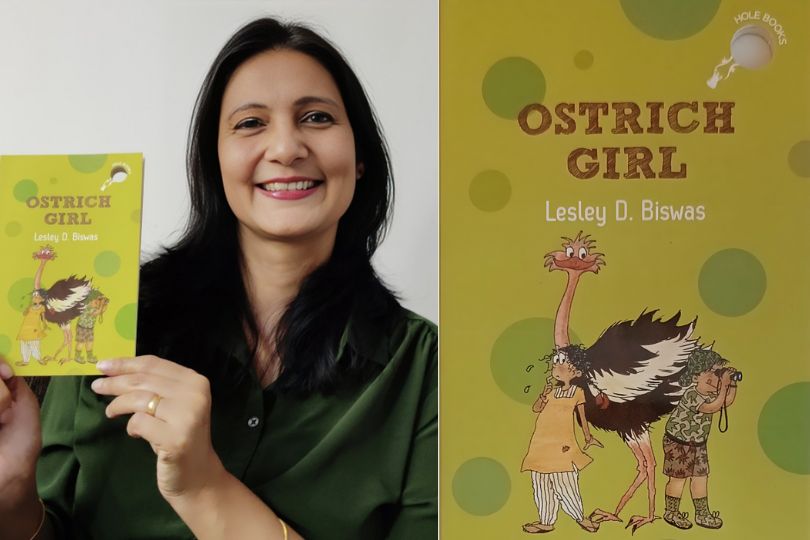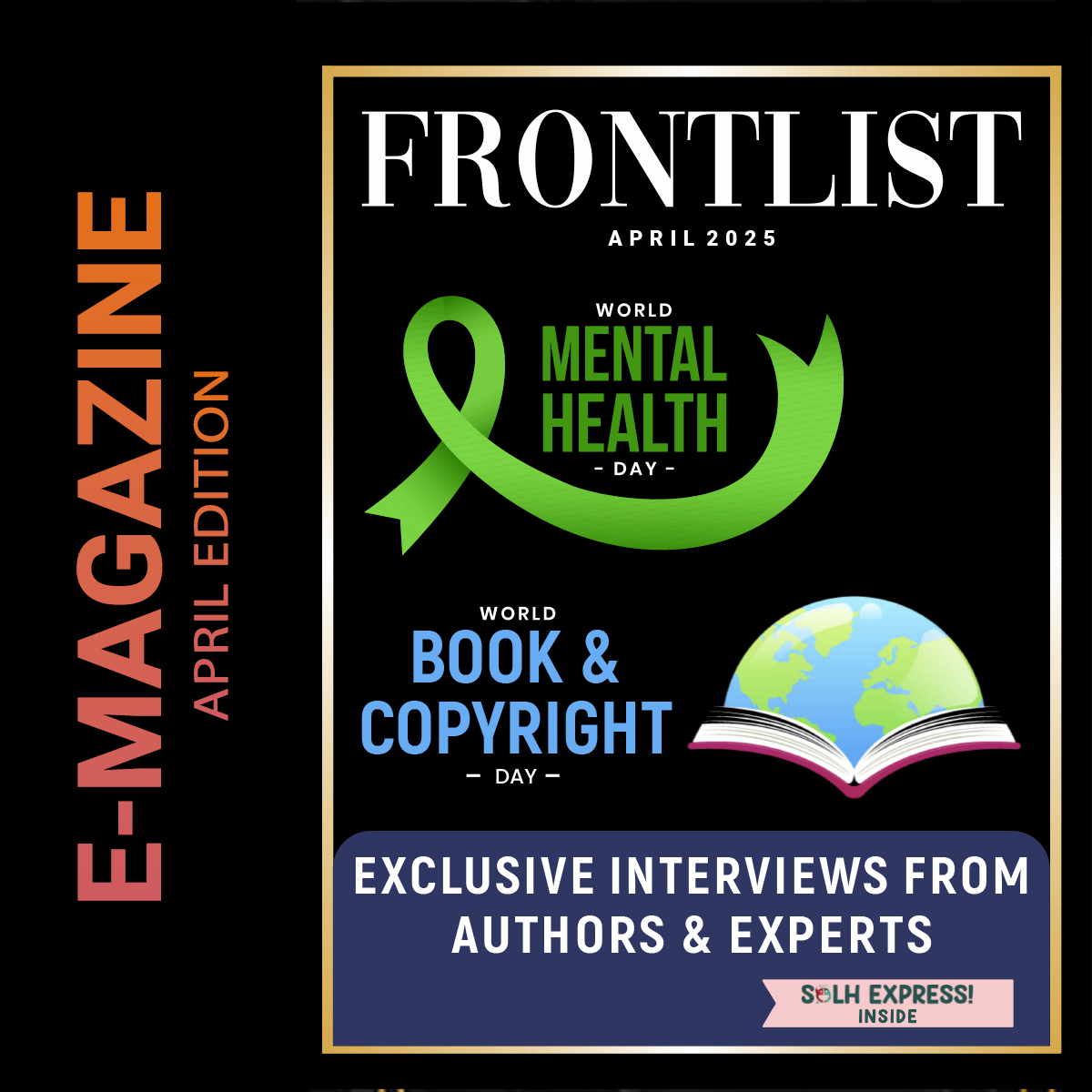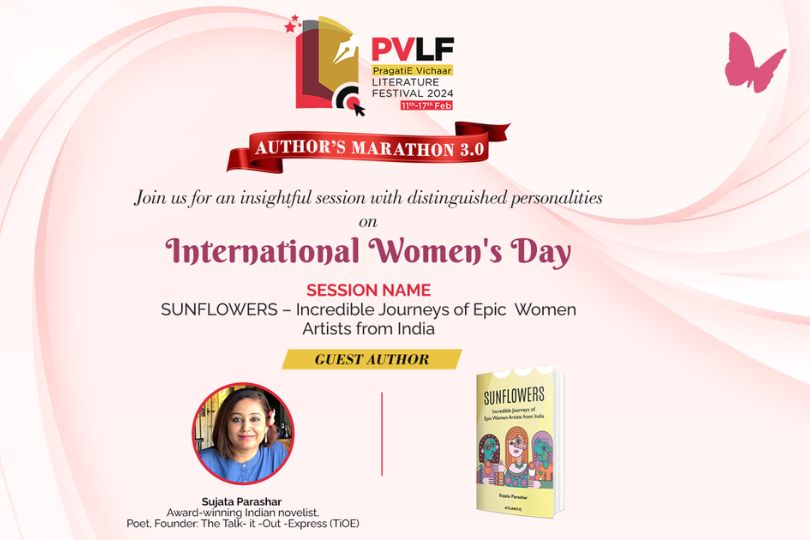Interview with Lesley D. Biswas, Author “Ostrich Girl”
Explore an insightful interview with Lesley D. Biswas, author of the captivating novel 'Ostrich Girl,' delving into her inspiration and writing journey.on Jul 08, 2024

Lesley D. Biswas grew up in McCluskiegunj, and dreamed of playing cricket. But instead of a bat, she ended up with a pen in her hand. Currently based in Kolkata, she's a freelance writer who enjoys writing children's stories the most. She's also passionate about nature, gardening and bird photography.
Frontlist: What inspired you to write a children's book that weaves together the themes of biodiversity, conservation, and the beauty of nature?
Lesley: I grew up in the countryside where nature was present at every turn. At our home in the small hamlet named McCluskiegunj, we were fortunate to have a private jungle that stretched out beyond our backyard. This meant as a child. I was treated to wonderful sights of wildlife that ranged from common animals like hare, jackal, mongoose, wild boar and iguana to sometimes rare sightings of a pangolin or a herd of elephants. My close association with nature and observation of wildlife around me helped me appreciate its beauty and respect their instincts. So, when I began writing books for children, it was only natural that themes like biodiversity and conservation excited me as a child and inspired my stories, be it the topic of endangered species in 'Chumki and the Pangolin,' or the human-wildlife conflict highlighted in 'Chumki and the Elephants.'
Specifically speaking of Ostrich Girl, my latest book, the idea came to me during the pandemic when I noticed people adopting animals as pets. This trend might have started to stay connected with nature and to help them cope with loneliness and the anxiety of uncertain times. But as a birder, I knew the ugly side of trapping wild animals for pets. As I researched the topic, I learned that parakeets, one of the most common birds seen caged in people's homes, happen to be protected under the Wildlife Protection Act of 1972. I chose to talk about this in Ostrich Girl, hoping that readers become aware of the common birds that are illegal to keep as pets under the law and the consequences of their actions.
Frontlist: Environmental education can sometimes feel textbook-heavy. How does "Ostrich Girl" use storytelling and adventure to make learning about bird conservation fun and relatable for young students?
Lesley: Children today might be largely cut off from nature, but they are living the realities of biodiversity loss and climate change. They are experiencing heatwaves, forest fires, natural disasters and species extinction, firsthand. So more than introducing them to environment issues or amplifying the dangers facing nature and wildlife or raising children who care; it's about inspiring them to become conservationist themselves by subtly drawing their attention to issues that could use their voice and participation.
For instance, reading about birding as an exciting hobby is bound to pique their interest. When they further explore the fun aspects of this hobby during birdwatching in their backyard or go on trips to nature parks, they will automatically become sensitive towards how one must approach wildlife, especially birds, with respect for their natural instincts. Even the topic of sustainable tourism is put forward in a gentle way through my story. As children follow the journey of characters like Ritu and Anik, they become conscious of their own role as a local and a tourist and the impact a tourist has on the local culture and biodiversity of a holiday spot.
Frontlist: The illustrations by Anupama Ajinkya Apte are delightful. Can you tell us about the whole collaboration the process with her that brought your story to life?
Lesley: I have been a huge fan of Anupama's work ever since she illustrated my first book, Unlucky Chumki, followed by the other two books in the series. And once again I've been fortunate to have Anupama bring the characters of Ostrich Girl alive. But, from choosing an illustrator to the illustrations, the editor makes all the decisions.
During the designing process, as an author, I provide any input and feedback that the illustrator and editor may ask for. For the collaboration process of Ostrich Girl, the discussion about the artwork was largely centered around getting the specifics of birds right. Since the book includes diverse species, even a birder like me sometimes finds it challenging to differentiate one species from another. But when it comes to characters, Anupama is superb at capturing the personality, attitude and features from the text!
Frontlist: Ritu is a compelling character with a unique talent. How did you develop her character, and what message do you hope she conveys to young readers?
Lesley: Experiencing nature and wildlife firsthand is the best way for a child to learns empathy towards nature, the delicate balance between all living species and how precious it is to maintain ecological stability. Unfortunately, in current times, a child's interaction with nature and its wonderful creatures is limited to sporadic visits to wildlife sanctuaries or their neighborhood parks. I wanted readers to experience the thrills and challenges of childhood amidst nature, so I decided to create a character like Ritu. While Ritu's childhood experiences of living on an island with cyclone threats and an uncertain livelihood might be unique to many children, her struggles to fit in with a group of children from her village and the hurt she feels when bullied for her hoarse voice are something most children will easily identify with.
Plus, children are dynamic thinkers. Thanks to their childlike imagination, their ability to devise solutions for problems is different from that of grownups. The possibilities are infinite and interesting when children are given an opportunity to problem-solve. After reading Ritu's story, I hope little children are able to see themselves as important agents who have a voice and are big enough to make a difference. No matter how much of a global problem there is, there is always a small role they can play in solving it.
Frontlist: The book touches on the issue of illegal bird trapping and trading. How do you approach sensitive topics like these in a way that is appropriate for young readers?
Lesley: The idea is not to overwhelm children and provide age-appropriate content. While the topic is gloomy, it's important to focus on the silver lining. During my research on the topic of illegal bird trapping, I came across the heartwarming story of a village named Mangalajodhi in Odisha. The story is about how villagers gave up poaching to become birding guides, which I thought was a brilliant example of what a little awareness among the local communities can do and when these locals bond together to conserve biodiversity, they can make a huge difference. This not only struck a chord, but I knew it was a great way to inspire young readers eager to find a practical way to tackle illegal bird trapping and trade. The reason I incorporated the true story in my book. Since children love stories that provide hope and have inspiring characters and heroes who they would want to emulate, I think Ostrich Girl has that element to connect with young readers.
Frontlist: Ritu's story highlights the importance of following your passion. Can you share some ideas on how teachers can use your book to encourage students to explore their interests in nature and consider careers?
Lesley: Children respond to stories that move them. They fall in love with characters who are passionate and determined, just like Ritu is in Ostrich Girl. Teachers can point out Ritu's courage and her drive and discuss how children need to stand up for something they feel strongly about, even if it's against all odds. In the classroom teachers can design projects with nature as a theme and discuss current news on climate change, species extinction and the like.
Students will benefit greatly if given an opportunity to participate in nature workshops, engage in awareness campaigns and cleanliness drives and fundraise for initiatives that protect biodiversity. This will spark their interest in hobbies and careers related to nature and conservation. When their local nature society announces bird-counting or tree-planting initiatives, enrolling students in these activities will give them an opportunity to play a part.



.jpg)






.jpg)

.jpg)
.jpg)
.jpg)
.jpg)
.jpg)










Sorry! No comment found for this post.